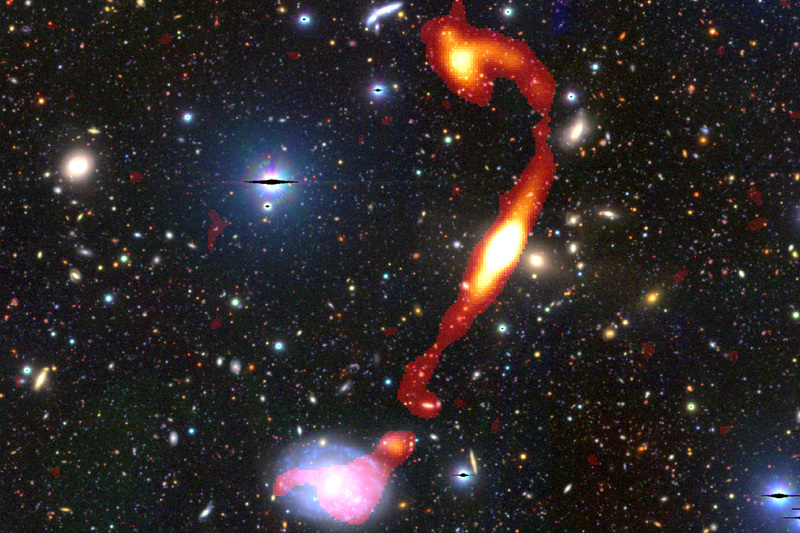MeerKAT helps UCT scientists uncover giant radio galaxy
24 January 2025 | Story Staff writer. Photo Supplied. Read time 4 min.
A team of scientists at the University of Cape Town (UCT) together with South Africa’s MeerKAT radio telescope, have discovered a giant radio galaxy (GRG), that is guaranteed to help broaden astronomers’ understanding of the largest structures in the universe.
Named Inkathazo, which means trouble in isiZulu and isiXhosa, GRGs like this are extraordinary cosmic phenomena. They emit massive galaxies of plasma jets millions of light years across the intergalactic space and are powered by supermassive black holes located at their centres. And though previously considered rare, an increase of GRG discoveries has been made possible in recent years thanks to cutting-edge technology like MeerKAT.
The research study, which explores Inkathazo and highlights the findings, was published in a research paper in the Monthly Notices of the Royal Astronomical Society, and features contributions from researchers and scientists globally.
A ‘significant’ find
“The number of GRG discoveries has absolutely exploded in the past five years thanks to powerful new telescopes like MeerKAT. Research into GRG is developing rapidly that it’s becoming hard to keep up. It’s incredibly exciting,” said Kathleen Charlton, a UCT master’s student and co-author of the study.
Charlton said the discovery is particularly significant because it revealed a giant radio galaxy with plasma jets extending 3.3 million light years, more than 32 times the size of the milky way. She said the name Inkathazo was chosen especially because the galaxy’s features have posed challenges for researchers attempting to understand its unique physics.
“It doesn’t have the same characteristics as many other giant radio galaxies.”
“It doesn’t have the same characteristics as many other giant radio galaxies. For example, the plasma jets have an unusual shape. Rather than extending straight across from end-to-end, one of the jets is bent,” she said.
Marvelous MeerKAT
Thanks to MeerKAT’s advanced capabilities, researchers were able to create high-resolution spectral age maps, which track the age of the plasma jets across different regions. And these maps revealed unexpected energy boosts in the electrons within the jets, likely caused by collisions with hot gas between galaxies in the cluster. This discovery challenges existing plasma physics models and highlights the complexities of these extreme cosmic objects.
MeerKAT is operated by the South African Radio Astronomy Observatory (SARAO) and has proven to be a revolutionary tool for exploring the southern sky. As a precursor to the Square Kilometre Array (SKA), it offers unmatched sensitivity and resolution, making it a key player in uncovering cosmic mysteries like Inkathazo.
And Dr Jacinta Delhaize, a researcher in UCT’s Department of Astronomy, agreed.
"The fact that we unveiled three GRGs by pointing MeerKAT at a single patch of sky goes to show that there is likely a huge treasure trove of undiscovered GRGs in the southern sky,” Dr Delhaize said.
“We’re entering an exciting era of radio astronomy. While MeerKAT has taken us further than ever before, the SKA will allow us to push these boundaries even further and hopefully solve some of the mysteries surrounding enigmatic objects like giant radio galaxies.”
 This work is licensed under a Creative Commons Attribution-NoDerivatives 4.0 International License.
This work is licensed under a Creative Commons Attribution-NoDerivatives 4.0 International License.
Please view the republishing articles page for more information.










